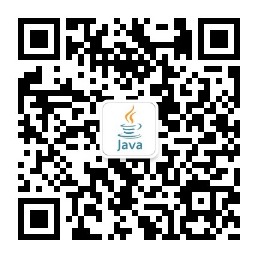首页 > 基础资料 博客日记
【Java多数据源实现教程】实现动态数据源、多数据源切换方式
2023-08-23 17:48:38基础资料围观1210次
前言

本文为 【Java多数据源实现教程】 相关知识,由于自己最近在做导师的项目的时候需要使用这种技术,于是自学了相关技术原理与实现,并将其整理如下,具体包含:多数据源的典型使用场景(包含业务复杂场景、读写分离场景),多数据源实现原理及实现方法(包含通过AbstractRoutingDataSource实现动态数据源、多数据源切换方式、Spring集成多个MyBatis框架实现多数据源),多数据源事务控制(包含只使用主库TransactionManger、一个方法开启2个事务),dynamic-datasource多数源组件等~
📌博主主页:小新要变强 的主页
👉Java全栈学习路线可参考:【Java全栈学习路线】最全的Java学习路线及知识清单,Java自学方向指引,内含最全Java全栈学习技术清单~
👉算法刷题路线可参考:算法刷题路线总结与相关资料分享,内含最详尽的算法刷题路线指南及相关资料分享~
👉Java微服务开源项目可参考:企业级Java微服务开源项目(开源框架,用于学习、毕设、公司项目、私活等,减少开发工作,让您只关注业务!)
目录
文章标题

一、多数据源的典型使用场景
在实际开发中,经常可能遇到在一个应用中可能需要访问多个数据库的情况。以下是两种典型场景:
1️⃣业务复杂(数据量大)
数据分布在不同的数据库中,数据库拆了, 应用没拆。 一个公司多个子项目,各用各的数据库,涉及数据共享…

2️⃣读写分离
- 为了解决数据库的读性能瓶颈(读比写性能更高, 写锁会影响读阻塞,从而影响读的性能)。
- 很多数据库拥主从架构。也就是,一台主数据库服务器,是对外提供增删改业务的生产服务器;另一(多)台从数据库服务器,主要进行读的操作。ꞏ
- 可以通过中间件(ShardingSphere、mycat、mysql-proxy 、TDDL …),但是有一些规模较小的公司,没有专门的中间件团队搭建读写分离基础设施,因此需要业务开发人员自行实现读写分离。

这里的架构与上图类似。不同的是,在读写分离中,主库和从库的数据库是一致的(不考虑主从延迟)。数据更新操作(insert、update、delete)都是在主库上进行,主库将数据变更信息同步给从库。在查询时,可以在从库上进行,从而分担主库的压力。
二、多数据源实现原理及实现方法
原理:
对于大多数的java应用,都使用了spring框架,spring-jdbc模块提供AbstractRoutingDataSource,其内部可以包含了多个DataSource,然后在运行时来动态的访问哪个数据库。这种方式访问数据库的架构图如下所示:

应用直接操作的是AbstractRoutingDataSource的实现类,告诉AbstractRoutingDataSource访问哪个数据库,然后由AbstractRoutingDataSource从事先配置好的数据源(ds1、ds2)选择一个,来访问对应的数据库。

- (1)当执行数据库持久化操作,只要集成了Spring就一定会通过DataSourceUtils获取Connection
- (2)通过Spring注入的DataSource获取Connection即可执行数据库操作。所以思路就是:只需配置一个实现了DataSource的Bean, 然后根据业务动态提供Connection即可
- (3)其实Spring已经提供一个DataSource实现类用于动态切换数据源——AbstractRoutingDataSource
- (4)分析AbstractRoutingDataSource即可实现动态数据源切换。
1️⃣通过AbstractRoutingDataSource实现动态数据源
通过这个类可以实现动态数据源切换。如下是这个类的成员变量:
private Map<Object, Object> targetDataSources;
private Object defaultTargetDataSource;
private Map<Object, DataSource> resolvedDataSources;
- targetDataSources保存了key和数据库连接的映射关系
- defaultTargetDataSource标识默认的连接
- resolvedDataSources这个数据结构是通过targetDataSources构建而来,存储结构也是数据库标识和数据源的映射关系
而AbstractRoutingDataSource实现了InitializingBean接口,并实现了afterPropertiesSet方法。afterPropertiesSet方法是初始化bean的时候执行,通常用作数据初始化。(resolvedDataSources就是在这里赋值)
@Override
public void afterPropertiesSet() {
...
this.resolvedDataSources = new HashMap<Object, DataSource(this.targetDataSources.size());//初始化resolvedDataSources
//循环targetDataSources,并添加到resolvedDataSources中
for (Map.Entry<Object, Object> entry : this.targetDataSources.entrySet()) {
Object lookupKey = resolveSpecifiedLookupKey(entry.getKey());
DataSource dataSource = resolveSpecifiedDataSource(entry.getValue());
this.resolvedDataSources.put(lookupKey, dataSource);
}
...
}
- 所以,我们只需创建
AbstractRoutingDataSource实现类DynamicDataSource然后初始化targetDataSources和key为数据源标识(可以是字符串、枚举、都行,因为标识是Object)、defaultTargetDataSource即可 - 后续当调用
AbstractRoutingDataSource.getConnection会接着调用提供的模板方法:determineTargetDataSource - 通过
determineTargetDataSource该方法返回的数据库标识从resolvedDataSources中拿到对应的数据源 - 所以,我们只需
DynamicDataSource中实现determineTargetDataSource为其提供一个数据库标识
总结,在整个代码中我们只需做4件大事:
- (1)定义
AbstractRoutingDataSource实现类DynamicDataSource - (2)初始化时为
targetDataSources设置不同数据源的DataSource和标识、及defaultTargetDataSource - (3)在
determineTargetDataSource中提供对应的数据源标识即可 - (4)切换数据源标识即可
什么到这还不会? 附上代码:
🍀(1)配置多数据源和 AbstractRoutingDataSource的自定义实现类:DynamicDataSource
配置多数据:
application.yml:
spring:
datasource:
type: com.alibaba.druid.pool.DruidDataSource
datasource1:
url: jdbc:mysql://127.0.0.1:3306/datasource1?serverTimezone=UTC&useUnicode=true&characterEncoding=UTF8&useSSL=false
username: root
password: 123456
initial-size: 1
min-idle: 1
max-active: 20
test-on-borrow: true
driver-class-name: com.mysql.cj.jdbc.Driver
datasource2:
url: jdbc:mysql://127.0.0.1:3306/datasource2?serverTimezone=UTC&useUnicode=true&characterEncoding=UTF8&useSSL=false
username: root
password: 123456
initial-size: 1
min-idle: 1
max-active: 20
test-on-borrow: true
driver-class-name: com.mysql.cj.jdbc.Driver
DynamicDataSourceConfig.java:
@Configuration
public class DynamicDataSourceConfig {
@Bean
@ConfigurationProperties("spring.datasource.datasource1")
public DataSource firstDataSource(){
return DruidDataSourceBuilder.create().build();
}
@Bean
@ConfigurationProperties("spring.datasource.datasource2")
public DataSource secondDataSource(){
return DruidDataSourceBuilder.create().build();
}
@Bean
@Primary
public DynamicDataSource dataSource(DataSource firstDataSource, DataSource secondDataSource) {
Map<Object, Object> targetDataSources = new HashMap<>(5);
targetDataSources.put(DataSourceNames.FIRST, firstDataSource);
targetDataSources.put(DataSourceNames.SECOND, secondDataSource);
return new DynamicDataSource(firstDataSource, targetDataSources);
}
}
DynamicDataSource.java:
public class DynamicDataSource extends AbstractRoutingDataSource {
/**
* ThreadLocal 用于提供线程局部变量,在多线程环境可以保证各个线程里的变量独立于其它线程里的变量。
* 也就是说 ThreadLocal 可以为每个线程创建一个【单独的变量副本】,相当于线程的 private static 类型变量。
*/
private static final ThreadLocal<String> CONTEXT_HOLDER = new ThreadLocal<>();
/**
* 决定使用哪个数据源之前需要把多个数据源的信息以及默认数据源信息配置好
*
* @param defaultTargetDataSource 默认数据源
* @param targetDataSources 目标数据源
*/
public DynamicDataSource(DataSource defaultTargetDataSource, Map<Object, Object>
targetDataSources) {
super.setDefaultTargetDataSource(defaultTargetDataSource);
super.setTargetDataSources(targetDataSources);
super.afterPropertiesSet();
}
@Override
protected Object determineCurrentLookupKey() {
return getDataSource();
}
public static void setDataSource(String dataSource) {
CONTEXT_HOLDER.set(dataSource);
}
public static String getDataSource() {
return CONTEXT_HOLDER.get();
}
public static void clearDataSource() {
CONTEXT_HOLDER.remove();
}
}
2️⃣多数据源切换方式
多数据源切换方式需要根据我们的具体需求进行选择:
🍀(1)AOP+自定义注解
用于不同业务的数据源: 一般利用AOP,结合自定义注解动态切换数据源
- (1)自定义注解
@Target({ElementType.METHOD,ElementType.TYPE})
@Retention(RetentionPolicy.RUNTIME)
public @interface WR {
String value() default "W";
}
- (2)切面类
@Component
@Aspect
public class DynamicDataSourceAspect {
// 前置通知
@Before("within(com.tuling.dynamic.datasource.service.impl.*) && @annotation(wr)")
public void before(JoinPoint joinPoint, WR wr){
System.out.println(wr.value());
}
}
- (3)使用注解
@Service
public class FrendImplService implements FrendService {
@Autowired
FrendMapper frendMapper;
@Override
@WR("R") // 库2
public List<Frend> list() {
return frendMapper.list();
}
@Override
@WR("W") // 库1
public void save(Frend frend) {
frendMapper.save(frend);
}
}
🍀(2)MyBatis插件
用于读写分离的数据源:如果是MyBatis可以结合插件实现读写分离动态切换数据源
@Intercepts(
{@Signature(type = Executor.class, method = "update", args = {MappedStatement.class, Object.class}),
@Signature(type = Executor.class, method = "query", args = {MappedStatement.class, Object.class, RowBounds.class,ResultHandler.class})})
public class DynamicDataSourcePlugin implements Interceptor {
@Override
public Object intercept(Invocation invocation) throws Throwable {
Object[] objects = invocation.getArgs();
MappedStatement ms = (MappedStatement) objects[0];
// 读方法
if (ms.getSqlCommandType().equals(SqlCommandType.SELECT)) {
DynamicDataSource.name.set("R");
} else {
// 写方法
DynamicDataSource.name.set("W");
}
// 修改当前线程要选择的数据源的key
return invocation.proceed();
}
@Override
public Object plugin(Object target) {
if (target instanceof Executor) {
return Plugin.wrap(target, this);
} else {
return target;
}
}
@Override
public void setProperties(Properties properties) {
}
}
3️⃣Spring集成多个MyBatis框架实现多数据源

WDataSourceConfig.java:
@MapperScan(basePackages = "com.tuling.dynamic.datasource.mapper.w", sqlSessionFactoryRef = "wSqlSessionFactory")
public class WDataSourceConfig {
@Bean
@Primary
public SqlSessionFactory wSqlSessionFactory(@Qualifier("dataSource1") DataSource dataSource1) throws Exception {
final SqlSessionFactoryBean sessionFactory = new SqlSessionFactoryBean();
sessionFactory.setDataSource(dataSource1);
sessionFactory.setMapperLocations(new PathMatchingResourcePatternResolver().getResources("classpath:mapper/w/*.xml"));
/*主库设置sql控制台打印*/
org.apache.ibatis.session.Configuration configuration = new org.apache.ibatis.session.Configuration();
configuration.setLogImpl(StdOutImpl.class);
sessionFactory.setConfiguration(configuration);
return sessionFactory.getObject();
}
}
RDataSourceConfig.java:
@MapperScan(basePackages = "com.tuling.dynamic.datasource.mapper.r", sqlSessionFactoryRef = "rSqlSessionFactory")
public class RMyBatisConfig {
@Bean
public SqlSessionFactory rSqlSessionFactory(@Qualifier("dataSource2") DataSource dataSource2) throws Exception {
final SqlSessionFactoryBean sessionFactory = new SqlSessionFactoryBean();
sessionFactory.setDataSource(dataSource2);
sessionFactory.setMapperLocations(new PathMatchingResourcePatternResolver().getResources("classpath:mapper/r/*.xml"));
/*从库设置sql控制台打印*/
org.apache.ibatis.session.Configuration configuration = new org.apache.ibatis.session.Configuration();
configuration.setLogImpl(StdOutImpl.class);
sessionFactory.setConfiguration(configuration);
return sessionFactory.getObject();
}
}
三、多数据源事务控制
在多数据源下,由于涉及到数据库的多个读写。一旦发生异常就可能会导致数据不一致的情况, 在这种情况希望使用事务进行回退。
Spring的声明式事务在一次请求线程中只能使用一个数据源进行控制。
但是是对于多源数据库:
- (1)单一事务管理器(
TransactionManager)无法切换数据源,需要配置多个TransactionManager。 - (2)
@Transactionnal是无法管理多个数据源的。 如果想真正实现多源数据库事务控制,肯定是需要分布式事务。这里讲解多源数据库事务控制的一种变通方式。
@Bean
public DataSourceTransactionManager transactionManager1(DynamicDataSource dataSource){
DataSourceTransactionManager dataSourceTransactionManager = new DataSourceTransactionManager();
dataSourceTransactionManager.setDataSource(dataSource);
return dataSourceTransactionManager;
}
@Bean
public DataSourceTransactionManager transactionManager2(DynamicDataSource dataSource){
DataSourceTransactionManager dataSourceTransactionManager = new DataSourceTransactionManager();
dataSourceTransactionManager.setDataSource(dataSource);
return dataSourceTransactionManager;
}
1️⃣只使用主库TransactionManger
使用主库事务管理器,也就是说事务中产生异常时,只能回滚主库数据。但是因为数据操作顺序是先主后从,所以分一下三种情况:
- (1)主库插入时异常,主库未插成功,这时候从库还没来及插入,主从数据是还是一致的
- (2)主库插入成功,从库插入时异常,这时候在主库事务管理器监测到事务中存在异常,将之前插入的主库数据插入,主从数据还是一致的
- (3)主库插入成功,从库插入成功,事务结束,主从数据一致
@Override
@WR("W")
public void save(Frend frend) {
frendMapper.save(frend);
//int a=1/0; 1.主库插入时异常,主库未插成功,这时候从库还没来及插入,主从数据是还是一致的
}
@Override
@WR("R")
@Transactional(transactionManager = "transactionManager2",propagation= Propagation.REQUIRES_NEW)
public void saveRead(Frend frend) {
frend.setName("xushu");
frendMapper.save(frend);
// int a=1/0; 2.主库插入成功,从库插入时异常,这时候在主库事务管理器监测到事务中存在异常,将之前插入的主库数据插入,主从数据还是一致的
}
@Override
@Transactional(transactionManager = "transactionManager1")
public void saveAll(Frend frend) {
// 3. 无异常情况:主库插入成功,从库插入成功,事务结束,主从数据一致。
FrendService self= (FrendService)AopContext.currentProxy();
self.save(frend);
self.saveRead(frend);
//int a=1/0; 从库插入之后出现异常, 只能回滚主库数据 ,从库数据是无法回滚的 , 数据将不一致
}
当然这只是理想情况,例外情况:
- (4)从库插入之后出现异常, 只能回滚主库数据 ,从库数据是无法回滚的 , 数据将不一致
- (5)从库数据插入成功后,主库提交,这时候主库崩溃了,导致数据没插入,这时候从库数据也是无法回滚的。这种方式可以简单实现多源数据库的事务管理,但是无法处理上述情况。
2️⃣一个方法开启2个事务
spring编程式事务 :
// 读‐‐ 写库
@Override
public void saveAll(Frend frend) {
wtransactionTemplate.execute(wstatus ‐> {
rtransactionTemplate.execute(rstatus ‐> {
try{
saveW(frend);
saveR(frend);
int a=1/0;
return true;
}catch (Exception e){
wstatus.setRollbackOnly();
rstatus.setRollbackOnly();
return false;
}
});
return true;
});
}
spring声明式事务:
@Transactional(transactionManager = "wTransactionManager")
public void saveAll(Frend frend) throws Exception {
FrendService frendService = (FrendService) AopContext.currentProxy();
frendService.saveAllR(frend);
}
@Transactional(transactionManager = "rTransactionManager",propagation = Propagation.REQUIRES_NEW )
public void saveAllR(Frend frend) {
saveW(frend);
saveR(frend);
int a = 1 / 0;
}
四、dynamic-datasource多数源组件
两三个数据源、事务场景比较少,基于 SpringBoot 的多数据源组件,功能强悍,支持 Seata 分布式事务。
- 支持数据源分组,适用于多种场景纯粹多库 读写分离 一主多从 混合模式。
- 支持数据库敏感配置信息加密 ENC()。
- 支持每个数据库独立初始化表结构schema和数据库database。
- 支持无数据源启动,支持懒加载数据源(需要的时候再创建连接)。
- 支持自定义注解,需继承DS(3.2.0+)。
- 提供并简化对Druid,HikariCp,BeeCp,Dbcp2的快速集成。
- 提供对MybatisPlus,Quartz,ShardingJdbc,P6sy,Jndi等组件的集成方案。
- 提供自定义数据源来源方案(如全从数据库加载)。
- 提供项目启动后动态增加移除数据源方案。
- 提供Mybatis环境下的纯读写分离方案。
- 提供使用spel动态参数解析数据源方案。内置spel,session,header,支持自定义。
- 支持多层数据源嵌套切换 。(ServiceA >>> ServiceB >>> ServiceC)。
- 提供基于seata的分布式事务方案。
- 提供本地多数据源事务方案。 附:不能和原生spring事务混用。
🍀(1)约定
- (1)本框架只做切换数据源 这件核心的事情,并不限制你的具体操作,切换了数据源可以做任何CRUD。
- (2)配置文件所有以下划线 _ 分割的数据源 首部 即为组的名称,相同组名称的数据源会放在一个组下。
- (3)切换数据源可以是组名,也可以是具体数据源名称。组名则切换时采用负载均衡算法切换,默认是轮询的。
- (4)默认的数据源名称为 master ,你可以通过
spring.datasource.dynamic.primary修改。 - (5)方法上的注解优先于类上注解。
- (6)DS支持继承抽象类上的DS,暂不支持继承接口上的DS。
🍀(2)使用方法
(1)引入dynamicdatasourcespringbootstarter。
<dependency>
<groupId>com.baomidou</groupId>
<artifactId>dynamic‐datasource‐spring‐boot‐starter</artifactId>
<version>${version}</version>
</dependency>
(2)配置数据源。
spring:
datasource:
dynamic:
#设置默认的数据源或者数据源组,默认值即为master
primary: master
#严格匹配数据源,默认false. true未匹配到指定数据源时抛异常,false使用默认数据源
strict: false
datasource:
master:
url: jdbc:mysql://xx.xx.xx.xx:3306/dynamic
username: root
password: 123456
driver-class-name: com.mysql.jdbc.Driver # 3.2.0开始支持SPI可省略此配置
slave_1:
url: jdbc:mysql://xx.xx.xx.xx:3307/dynamic
username: root
password: 123456
driver-class-name: com.mysql.jdbc.Driver
slave_2:
url: ENC(xxxxx) # 内置加密,使用请查看详细文档
username: ENC(xxxxx)
password: ENC(xxxxx)
driver‐class‐name: com.mysql.jdbc.Driver
#......省略
#以上会配置一个默认库master,一个组slave下有两个子库slave_1,slave_2
# 多主多从 纯粹多库(记得设置primary) 混合配置
spring: spring: spring:
datasource: datasource: datasource:
dynamic: dynamic: dynamic:
datasource: datasource: datasource:
master_1: mysql: master:
master_2: oracle: slave_1:
slave_1: sqlserver: slave_2:
slave_2: postgresql: oracle_1:
slave_3: h2: oracle_2:
(3)使用@DS切换数据源。
@DS可以注解在方法上或类上,同时存在就近原则方法上注解优先于类上注解。
| 注解 | 结果 |
|---|---|
| 没有@DS | 默认数据源 |
| @DS(“dsName”) | dsName可以为组名也可以为具体某个库的名称 |
@Service
@DS("slave")
public class UserServiceImpl implements UserService {
@Autowired
private JdbcTemplate jdbcTemplate;
public List selectAll() {
return jdbcTemplate.queryForList("select * from user");
}
@Override
@DS("slave_1")
public List selectByCondition() {
return jdbcTemplate.queryForList("select * from user where age >10");
}
}
本地事务:
使用@DSTransactional即可, 不能和Spring@Transactional混用!
//在最外层的方法添加 @DSTransactional,底下调用的各个类该切数据源就正常使用DS切换数据源即可。 就是这么简单。~
//如AService调用BService和CService的方法,A,B,C分别对应不同数据源。
public class AService {
@DS("a")//如果a是默认数据源则不需要DS注解。
@DSTransactional
public void dosomething(){
BService.dosomething();
CService.dosomething();
}
}
public class BService {
@DS("b")
public void dosomething(){
//dosomething
}
}
public class CService {
@DS("c")
public void dosomething(){
//dosomething
}
}
只要@DSTransactional注解下任一环节发生异常,则全局多数据源事务回滚。
如果BC上也有@DSTransactional会有影响吗?答:没有影响的。
动态添加删除数据源:
通过DynamicRoutingDataSource 类即可,它就相当于我们之前自定义的那个DynamicDataSource。
@RestController
@RequestMapping("/datasources")
@Api(tags = "添加删除数据源")
public class DataSourceController {
@Autowired
private DataSource dataSource;
// private final DataSourceCreator dataSourceCreator; //3.3.1及以下版本使用这个通用
@Autowired
private DefaultDataSourceCreator dataSourceCreator;
@Autowired
private BasicDataSourceCreator basicDataSourceCreator;
@Autowired
private JndiDataSourceCreator jndiDataSourceCreator;
@Autowired
private DruidDataSourceCreator druidDataSourceCreator;
@Autowired
private HikariDataSourceCreator hikariDataSourceCreator;
@Autowired
private BeeCpDataSourceCreator beeCpDataSourceCreator;
@Autowired
private Dbcp2DataSourceCreator dbcp2DataSourceCreator;
@GetMapping
@ApiOperation("获取当前所有数据源")
public Set<String> now() {
DynamicRoutingDataSource ds = (DynamicRoutingDataSource) dataSource;
return ds.getCurrentDataSources().keySet();
}
//通用数据源会根据maven中配置的连接池根据顺序依次选择。
//默认的顺序为druid>hikaricp>beecp>dbcp>spring basic
@PostMapping("/add")
@ApiOperation("通用添加数据源(推荐)")
public Set<String> add(@Validated @RequestBody DataSourceDTO dto) {
DataSourceProperty dataSourceProperty = new DataSourceProperty();
BeanUtils.copyProperties(dto, dataSourceProperty);
DynamicRoutingDataSource ds = (DynamicRoutingDataSource) dataSource;
DataSource dataSource = dataSourceCreator.createDataSource(dataSourceProperty);
ds.addDataSource(dto.getPollName(), dataSource);
return ds.getCurrentDataSources().keySet();
}
@PostMapping("/addBasic(强烈不推荐,除了用了马上移除)")
@ApiOperation(value = "添加基础数据源", notes = "调用Springboot内置方法创建数据源,兼容1,2")
public Set<String> addBasic(@Validated @RequestBody DataSourceDTO dto) {
DataSourceProperty dataSourceProperty = new DataSourceProperty();
BeanUtils.copyProperties(dto, dataSourceProperty);
DynamicRoutingDataSource ds = (DynamicRoutingDataSource) dataSource;
DataSource dataSource = basicDataSourceCreator.createDataSource(dataSourceProperty);
ds.addDataSource(dto.getPollName(), dataSource);
return ds.getCurrentDataSources().keySet();
}
@PostMapping("/addJndi")
@ApiOperation("添加JNDI数据源")
public Set<String> addJndi(String pollName, String jndiName) {
DynamicRoutingDataSource ds = (DynamicRoutingDataSource) dataSource;
DataSource dataSource = jndiDataSourceCreator.createDataSource(jndiName);
ds.addDataSource(pollName, dataSource);
return ds.getCurrentDataSources().keySet();
}
@PostMapping("/addDruid")
@ApiOperation("基础Druid数据源")
public Set<String> addDruid(@Validated @RequestBody DataSourceDTO dto) {
DataSourceProperty dataSourceProperty = new DataSourceProperty();
BeanUtils.copyProperties(dto, dataSourceProperty);
dataSourceProperty.setLazy(true);
DynamicRoutingDataSource ds = (DynamicRoutingDataSource) dataSource;
DataSource dataSource = druidDataSourceCreator.createDataSource(dataSourceProperty);
ds.addDataSource(dto.getPollName(), dataSource);
return ds.getCurrentDataSources().keySet();
}
@PostMapping("/addHikariCP")
@ApiOperation("基础HikariCP数据源")
public Set<String> addHikariCP(@Validated @RequestBody DataSourceDTO dto) {
DataSourceProperty dataSourceProperty = new DataSourceProperty();
BeanUtils.copyProperties(dto, dataSourceProperty);
dataSourceProperty.setLazy(true);//3.4.0版本以下如果有此属性,需手动设置,不然会空指针。
DynamicRoutingDataSource ds = (DynamicRoutingDataSource) dataSource;
DataSource dataSource = hikariDataSourceCreator.createDataSource(dataSourceProperty);
ds.addDataSource(dto.getPollName(), dataSource);
return ds.getCurrentDataSources().keySet();
}
@PostMapping("/addBeeCp")
@ApiOperation("基础BeeCp数据源")
public Set<String> addBeeCp(@Validated @RequestBody DataSourceDTO dto) {
DataSourceProperty dataSourceProperty = new DataSourceProperty();
BeanUtils.copyProperties(dto, dataSourceProperty);
dataSourceProperty.setLazy(true);//3.4.0版本以下如果有此属性,需手动设置,不然会空指针。
DynamicRoutingDataSource ds = (DynamicRoutingDataSource) dataSource;
DataSource dataSource = beeCpDataSourceCreator.createDataSource(dataSourceProperty);
ds.addDataSource(dto.getPollName(), dataSource);
return ds.getCurrentDataSources().keySet();
}
@PostMapping("/addDbcp")
@ApiOperation("基础Dbcp数据源")
public Set<String> addDbcp(@Validated @RequestBody DataSourceDTO dto) {
DataSourceProperty dataSourceProperty = new DataSourceProperty();
BeanUtils.copyProperties(dto, dataSourceProperty);
dataSourceProperty.setLazy(true);//3.4.0版本以下如果有此属性,需手动设置,不然会空指针。
DynamicRoutingDataSource ds = (DynamicRoutingDataSource) dataSource;
DataSource dataSource = dbcp2DataSourceCreator.createDataSource(dataSourceProperty);
ds.addDataSource(dto.getPollName(), dataSource);
return ds.getCurrentDataSources().keySet();
}
@DeleteMapping
@ApiOperation("删除数据源")
public String remove(String name) {
DynamicRoutingDataSource ds = (DynamicRoutingDataSource) dataSource;
ds.removeDataSource(name);
return "删除成功";
}
}
原理:
- (1)通过
DynamicDataSourceAutoConfiguration自动配置类 - (2)配置了
DynamicRoutingDataSource它就相当于我们之前自定义的那个DynamicDataSource,用来动态提供数据源 - (3)配置
DynamicDataSourceAnnotationAdvisor就相当于之前自定义的一个切面类 - (4)设置
DynamicDataSourceAnnotationInterceptor当前advisor的拦截器,把它理解成之前环绕通知 - (5)当执行方法会调用
DynamicDataSourceAnnotationInterceptor#invoke 来进行增强:
// 获取当前方法的DS注解的value值
String dsKey = determineDatasourceKey(invocation);
// 设置当当前数据源的标识TheardLocal中
DynamicDataSourceContextHolder.push(dsKey);
try {
// 执行目标方法
return invocation.proceed();
} finally {
DynamicDataSourceContextHolder.poll();
}
- (6)在执行数据库操作时候, 就会调用
DataSource.getConnection,此时的DataSource指的就是DynamicRoutingDataSource - (7)然后执行模板方法
@Override
public DataSource determineDataSource() {
// 拿到之前切换的数据源标识
String dsKey = DynamicDataSourceContextHolder.peek();
// 通过该标识获取对应的数据源
return getDataSource(dsKey);
}
后记

👉Java全栈学习路线可参考:【Java全栈学习路线】最全的Java学习路线及知识清单,Java自学方向指引,内含最全Java全栈学习技术清单~
👉算法刷题路线可参考:算法刷题路线总结与相关资料分享,内含最详尽的算法刷题路线指南及相关资料分享~
本文来自互联网用户投稿,该文观点仅代表作者本人,不代表本站立场。本站仅提供信息存储空间服务,不拥有所有权,不承担相关法律责任。如若内容造成侵权/违法违规/事实不符,请联系邮箱:jacktools123@163.com进行投诉反馈,一经查实,立即删除!
标签:

